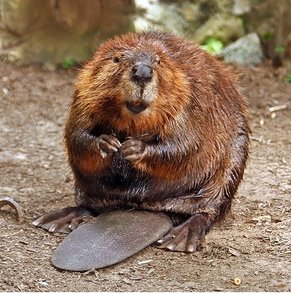 American Beaver (from Wikipedia) American Beaver (from Wikipedia) Success!!! Yes, I finally achieved success in my battle with muskrats in Fyrne Lake. If you remember my last article (May-June 2016 issue), I had laid out my problem ... way too many muskrat and beaver had taken up residence in our lake. They were causing shoreline erosion, threatening our dam through burrowing and preventing me from introducing aquatic plants as fish cover by consuming them in short order. I needed help and found it with Johnny Copeland with Copeland Beaver and Critter Control. He spent several weeks placing and baiting ingenious trap sets (many described in my last article) that fooled a substantial number of muskrat. But what about my beaver problem? Beaver are the larger cousin to the muskrat and are by far the most destructive. They’ll flood bottomland with their dams killing crops and forests, block overflow pipes in catch basins, ponds and lakes, kill trees by cutting them down to eat their bark. They also create bank erosion and damage impoundment dams through burrowing. All in all, beavers are a persistent and reviled enemy of farmers, foresters and pond owners. Fyrne Lake was no different. During Johnny’s investigation he identified multiple dens around the lake and several beaver dams along the outflow creek. As if their shoreline damaging dens surrounded by felled trees weren’t bad enough, the dams they constructed along the creek were backing up a substantial body of water stretching for several hundred feet. This was bad! The beaver were already using their new transportation highway to transport their recently felled trees. Something had to be done! Left to their own devices these beaver could expand their structure to flood several acres of hardwood forest. Johnny knew exactly what to do! After surveying the lake and outflow creek he went about setting multiple traps and snares. However, to be successful you need more than these two tools. You need to understand your target. Every species has their unique behaviors, but all animals are creatures of habit often following the same pattern day after day. Animal also tend to travel the path of least resistance. When a large branch blocks their normal path, rather than push through the obstacle, they tend to go around it. These facts combined with his intimate knowledge of beaver behavior guide Johnny’s trap and snare placement. Johnny’s trap of choice for beaver is the Conibear spring loaded 330. It’s an instant kill trap that’s powerful enough to kill a large beaver, but sensitive enough to trip and dispatch a juvenile muskrat. These traps are also very dangerous to humans. More than one absent minded trapper has suffered a broken bone or severe bruise from one. It takes skill and experience to safely set a 330 without endangering yourself and still have a good chance of capturing your target. With an eye toward safety, Johnny carefully set these traps along likely travel paths near identified den openings, beaver runs and dams. To increase his likelihood of success, he positioned obstructions on each side in the hopes of directing his prey toward the opening of the 330. For insurance he placed a small drop of beaver castor, his secret weapon, on the tip of a stick just beyond each trap. Castor is obtained from the scent gland of the beaver which secretes this yellowish oil while urinating to mark their territory and attract mates. It has a potent smell that’s sure to be noticed by any nearby beaver, often luring them to check out why the scent of a stranger is in their territory. The spring loaded traps, like the 330, work well most of the time. However, there’s always that challenging animal that seems to stay one step ahead of you. Like a 10 pound bass or a 12 point deer, there’s a reason some beavers live to become old and large… they’re smart! Most every trapper has been challenged by a granddaddy beaver consistently avoiding their traps. I think these professionals look forward to it! It’s the challenge of conquering an intelligent foe that makes success all the more sweet for any hunter or fisherman. I bet many of you have experienced the total exhilaration found pursuing a trophy deer or monster fish. Every time I take my fishing pole down to the lake and slip the line in the water my heart races. My mind reflects back on the years of discovering which baits work when, where to cast, how to present and when to set the hook. Occasionally this experience mixed with a little luck pays off with a trophy fish. I’ve also seen a good friend, who’s an experienced hunter, spend all summer identifying the territory and tracking the habits of a trophy deer to only be outsmarted during hunting season. Undeterred, he pursues his prey the following season and if necessary the season after that. The thrill of the pursuit is reward in itself. Johnny experiences the same excitement while pursuing beaver or any of the other unwanted species he’s asked to remove. Whether it’s a pack of coyote terrorizing a farm or an elusive raccoon that’s taken up residence in an attic, he’s enjoys learning their unique habits, strengths and vulnerabilities to bring his customer’s varmint issue to a successful conclusion. My beaver challenge was no different. Fyrne Lake was infested and had several established beaver families containing a few smart and huge individuals. Johnny wasn’t taking any chances. Rather than wait to be outsmarted, he mixed in several snares among his trap sets. Traps like the industrial appearing Conibear 330 are a challenge to conceal while snares, consisting of just a single cord or cable, blend in with their surroundings and, when properly set, are extremely effective. Snares are one of the earliest methods of trapping. They utilizes a cord that incorporates a slipknot which will tighten around the head, body or limb of an animal like a noose as they move through its opening. These effective devices have been made from vine, horsehair, woven twine or whatever locally available material can be fashioned into a cord. Today’s modern snares are often made of metal cable that are available in different gauges (diameters). For beaver Johnny prefers a five foot long, 5/64” diameter cable. Occasionally he’ll attach a 5 to 10 foot cable extension to reach an anchor point. Johnny emphasized to me the importance of proper anchoring. Beaver can chew through a sizable tree overnight. However, they only chew down to about 6” above the ground. Anchoring below this point is vital for consistent success. How and where you set your snare is just as important as how you anchor it. After surveying the area, Johnny knew exactly where he wanted to set his first, near a large poplar tree along Fyrne Lake’s outflow creek. The beaver had been working the tree for several days, chewing off its bark in a complete ring around its base. This poor tree was doomed! Even if the beaver don’t cut it down completely, they had already cleanly chewed through the sapwood layers located between the bark and heartwood. These layers contain the functioning passageways that transport fluid and nutrients from the roots to the branches. Now, everything above the cut was starving and would soon wither, die and rot. It was too late to save this poplar, but not too late to save the rest! Johnny looked for signs that would indicate how the beaver were traveling to and from the tree. It didn’t take long to notice a clear, slightly worn path starting at the tree’s base, along the shoreline and extending into the creek. He prepared his snare and waded out into the creek. After securing one end to a solid anchor point, Johnny mounted its opening vertically and half submerged directly in the path the beaver had been traveling. With one down, he moved on to his second snare set where he planned to used his prey’s dam building instincts against them. He was going to breach their dam! Johnny approached the beaver’s main structure, walked along its top and carefully selected the exact area for his attack. Quickly, he dug a trench through the dam’s top extending several inches below the waterline and placed a snare vertically in the middle. He then placed branches on either side and above to guide any beaver attempting to repair the dam right through the middle of the snare. With his traps and snares set, he returned home. Trapping takes patience. Even the best set trap or snare doesn’t always produce results. Over the next couple weeks Johnny ran his trap lines, sometimes with his son, Drake. Johnny shared with me how trapping is a dying art and he was blessed to be able to teach Drake this skill and its importance, not only to farmers and property owners, but for the environment itself. Development and human activity has created predator/prey wildlife imbalances that can lead to starvation, disease and over population. Trapping (as well as hunting) can be used to manage wildlife species within a specific habitat to create a healthy balanced and diverse wildlife population. Success! Johnny and his son’s efforts paid off! Numerous beaver along with a good number of muskrat were removed from Fyrne Lake. I’m glad I swallowed my pride and called in an expert. Any professional worth their salt will save you more time, money and effort than they cost. That saying now applies to Johnny. Thanks to his expertise and hard work ZERO beaver have been spotted in the 6 months since the trapping. That’s SUCCESS! Comments are closed.
|
AuthorKevin Griffith Archives
September 2018
Categories |
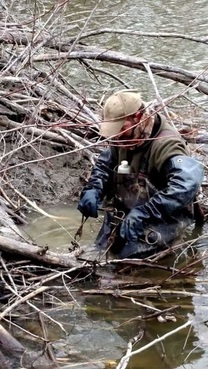
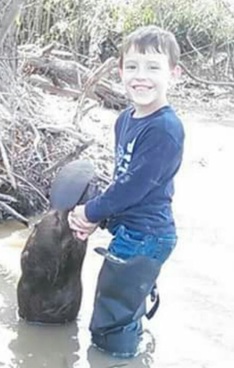
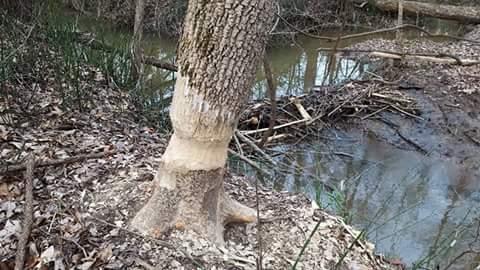
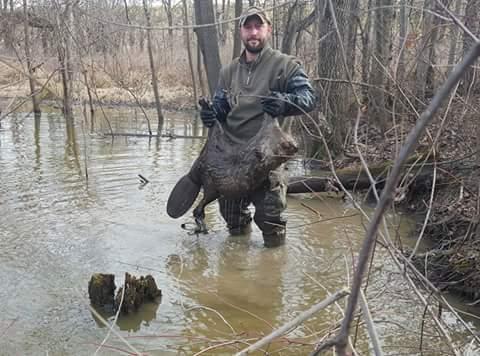
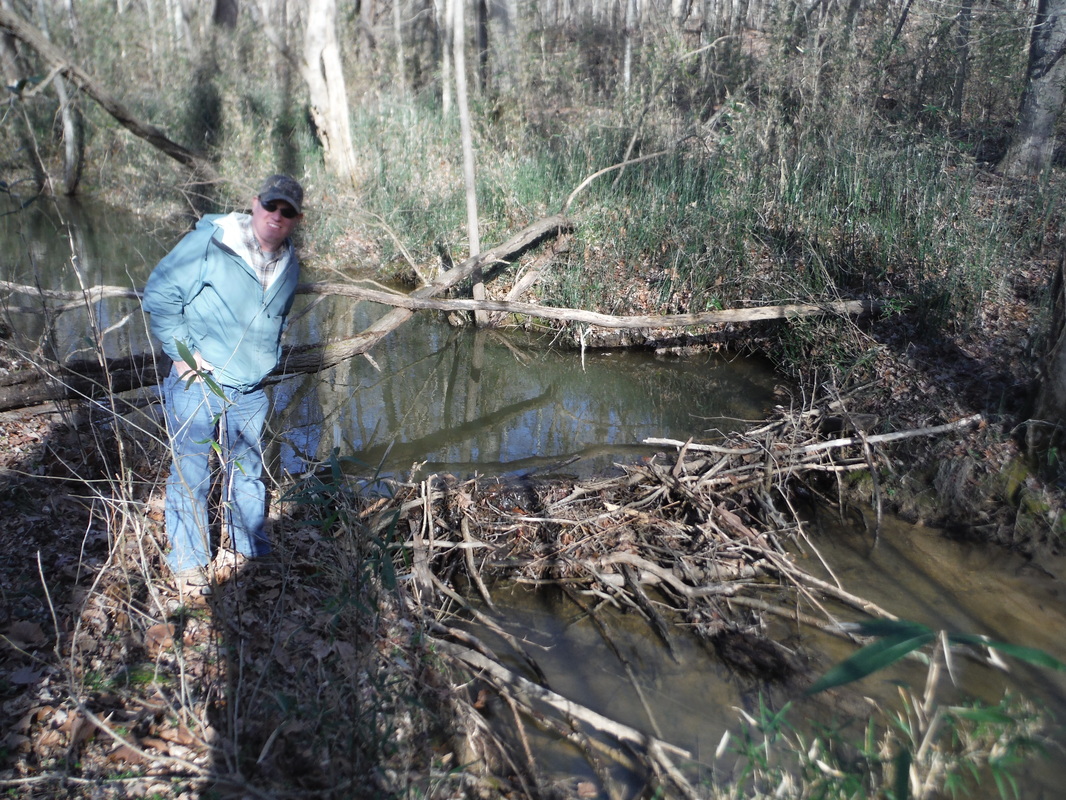
 RSS Feed
RSS Feed